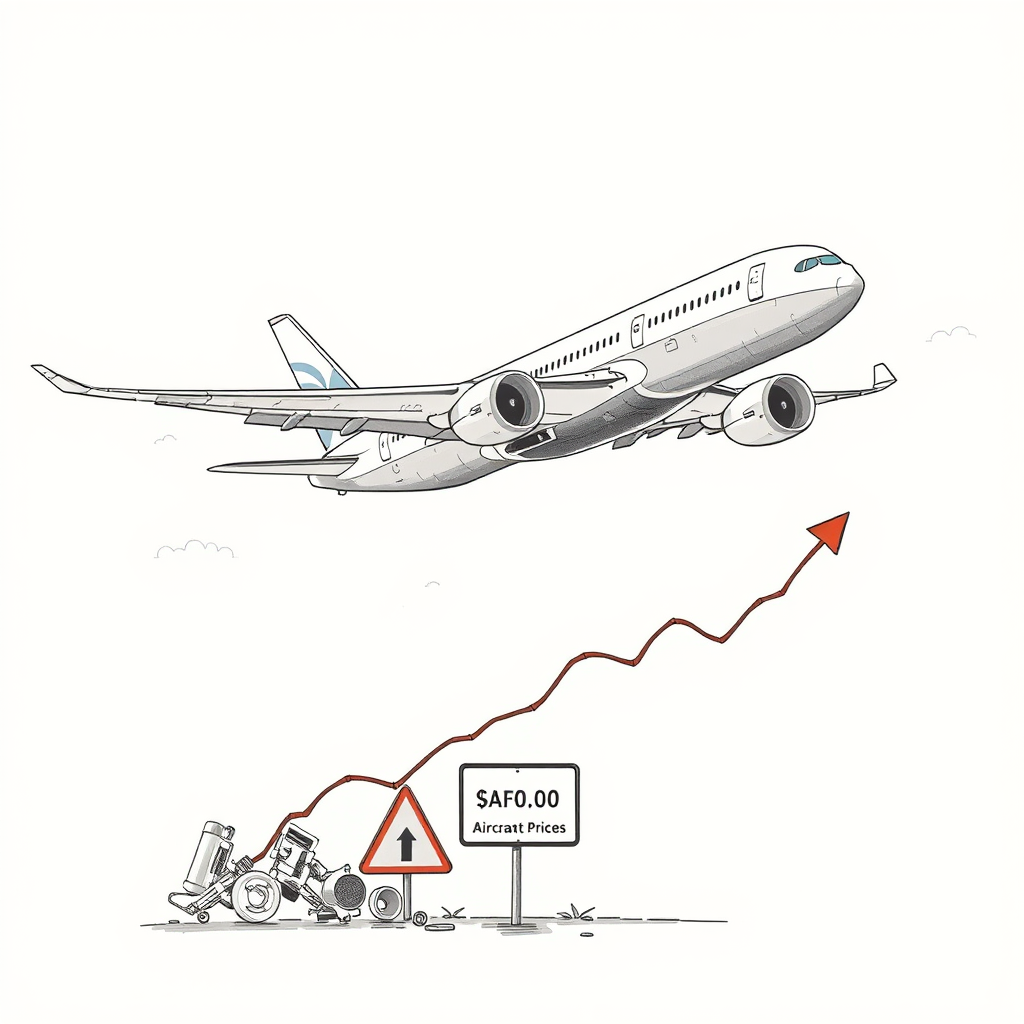Plane Prices Soar: Tariffs and Supply Chain Pain

Commercial aircraft prices are poised for further increases, building on recent gains fueled by pandemic-era supply chain disruptions. New tariffs on materials like steel and aluminum are expected to exacerbate the trend, impacting both Boeing and Airbus. Aviation experts indicate commercial jet prices have already risen roughly 30 percent since 2018.
The escalating costs stem from multiple factors. Boeing and Airbus are grappling with higher expenses for essential materials – particularly titanium – components, and labor. Boeing recently agreed to a contract with its Seattle machinist union that includes a 38 percent wage increase over four years, mirroring a similar agreement reached by Spirit AeroSystems, a key supplier for both manufacturers. The loss of Russian titanium capacity, following geopolitical events, has significantly impacted material costs, with some items like castings and forgings experiencing particularly sharp increases – around 40 percent since 2021, according to AeroDynamic Advisory’s Richard Aboulafia.
Adding to the pressure are former President Trump’s 25 percent tariffs on steel and aluminum. Aboulafia wryly noted the irony of tariffs driving up costs for materials that were previously readily available. John Persinos, editor-in-chief at Aircraft Value News, agrees, labeling the tariffs “disastrous” and predicting they will worsen existing inflationary pressures within the aviation sector.
Interestingly, the officially published price lists of both manufacturers are largely outdated and don’t reflect current market realities. Boeing hasn’t updated its figures since 2023, and Airbus’ catalogue remains unchanged since 2018. Aboulafia dismisses these “catalogue prices” as fictional, stating substantial discounts were routinely applied. Airbus itself has largely abandoned using catalogue prices, acknowledging they bear little relation to the final negotiated price, which is heavily influenced by specific contract details.
Negotiations often involve bundled services like maintenance and training offered at discounted rates, further obscuring the base aircraft price. Contracts typically include inflation adjustment clauses and provisions for price adjustments due to delivery delays. Currency exchange rate fluctuations also play a role. Boeing publicly states it bases pricing on production costs and market factors but refrains from disclosing specifics due to competitive concerns.
Despite a substantial backlog of orders extending through the decade, neither Boeing nor Airbus appears to be significantly boosting prices due to strong demand. The market remains highly competitive, with airlines routinely seeking bids from both manufacturers. Manfred Hader of Roland Berger consultancy notes that pre-pandemic, competition kept prices unusually low. However, post-lockdown travel demand and increased ticket prices have improved airline profitability, allowing them to absorb higher aircraft costs.
Recent orders, such as those placed by Japanese carrier ANA in February, offer a glimpse of the rising prices. The ANA order priced Boeing’s 787 Dreamliner at around $386 million and the 737 MAX at $159 million, compared to $292 million and $121.6 million in 2023. The Airbus A321neo was priced at around $148 million, up from $129.5 million in 2018.
The situation highlights a complex interplay of global economic factors, geopolitical events, and competitive market dynamics. While increased demand provides some buffer, the imposition of tariffs appears to be a counterproductive measure, ultimately increasing costs for airlines and potentially hindering the recovery and growth of the aviation industry. It’s a clear example of how trade policy can have unintended consequences, even in a sector as vital as air travel.